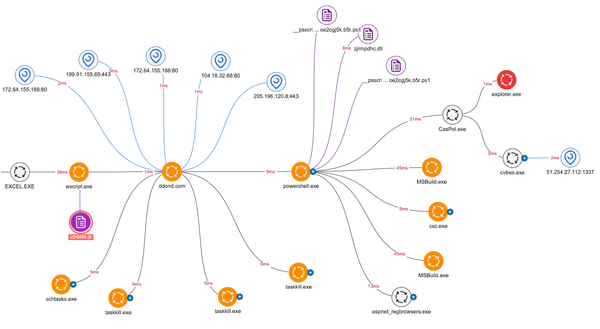Advanced OSINT Techniques: Comprehensive Strategy and Free Tools for Security Professionals

In the modern security landscape, Open Source Intelligence (OSINT) has become an indispensable discipline for both offensive and defensive operations. By leveraging publicly available information sources, security professionals can gather critical intelligence on potential threats, vulnerabilities, and attack surfaces without direct interaction with target systems. This comprehensive guide explores advanced OSINT methodologies, practical implementation strategies, and powerful free tools that security professionals can immediately deploy in their operations.
Understanding the OSINT Landscape
Before diving into specific techniques, it's essential to understand the scope and principles of effective OSINT operations:
OSINT Fundamentals and Methodology
OSINT refers to the collection and analysis of information from publicly available sources, including:
- Internet sources: Websites, forums, social media, and online services
- Public records: Government databases, legal filings, and regulatory documents
- Commercial data: Business registrations, financial reports, and corporate disclosures
- Academic resources: Research papers, conference proceedings, and educational materials
- Geospatial information: Maps, satellite imagery, and location data
What distinguishes OSINT from other intelligence disciplines is its reliance solely on open, legally accessible sources rather than covert or classified information. This characteristic makes it particularly valuable for preliminary reconnaissance in ethical hacking engagements, threat intelligence operations, and security assessments.
# Basic OSINT Investigation Methodology
1. Define clear intelligence requirements and objectives
2. Identify relevant sources based on the target and objectives
3. Collect information systematically while documenting sources
4. Process and organize the collected data
5. Analyze information to extract actionable intelligence
6. Validate findings through multiple sources when possible
7. Report results in a structured, actionable format
Effective OSINT requires a methodical approach similar to formal intelligence operations, with careful planning, systematic collection, and rigorous analysis. For security professionals conducting advanced penetration testing, OSINT typically forms the critical first phase of engagement.
The OSINT Intelligence Cycle
Professional OSINT operations follow a structured intelligence cycle:
- Planning and Direction: Defining intelligence requirements and objectives
- Collection: Gathering information from identified sources
- Processing: Organizing and transforming raw data into usable formats
- Analysis: Evaluating information to develop insights and intelligence
- Dissemination: Communicating findings to stakeholders
- Feedback: Refining requirements based on stakeholder input
This cyclical process ensures that OSINT activities remain focused on organizational objectives while adapting to new findings and emerging requirements. The cycle's structure helps prevent "analysis paralysis" that can occur when faced with the vast amounts of information available through open sources.
Domain and Infrastructure Intelligence
One of the most valuable applications of OSINT for security professionals is mapping an organization's digital footprint:
Subdomain Enumeration Techniques
Discovering an organization's complete subdomain landscape reveals potential attack surfaces:
- DNS enumeration: Identifying subdomains through DNS records
- Certificate transparency logs: Examining SSL/TLS certificates for domain information
- Search engine operators: Using specialized search queries to discover subdomains
- Web scraping: Extracting linked domains from public websites
- Wordlist brute forcing: Testing common subdomain patterns
# Example of subdomain enumeration using Subfinder (a free OSINT tool)
subfinder -d example.com -o example_subdomains.txt
# Using Amass for more comprehensive enumeration
amass enum -d example.com -o example_amass.txt
# Certificate transparency logs with crt.sh
curl -s "https://crt.sh/?q=%25.example.com&output=json" | jq -r '.[].name_value' | sort -u
Subdomain enumeration often reveals forgotten or improperly secured assets that may provide entry points for attacks. Security professionals should perform these checks regularly on their own infrastructure to identify unauthorized or forgotten assets that might expand the attack surface.
Free OSINT Tools for Domain Intelligence
Several powerful free tools excel at domain intelligence gathering:
- Amass: Comprehensive network mapping tool that performs DNS enumeration, scraping, and brute force
- Key features: Multiple enumeration techniques, graphing capabilities, automation support
- Usage example:
amass enum -d example.com -ip -brute -min-for-recursive 2 - URL: https://github.com/OWASP/Amass
- Subfinder: Fast passive subdomain discovery tool
- Key features: Multiple passive sources, high performance, straightforward usage
- Usage example:
subfinder -d example.com -recursive -all - URL: https://github.com/projectdiscovery/subfinder
- DNSdumpster: Web-based DNS reconnaissance tool
- Key features: Visual DNS mapping, extensive MX and host information
- URL: https://dnsdumpster.com/
- Shodan: Search engine for Internet-connected devices
- Key features: Port scanning, banner grabbing, vulnerability identification
- Usage example:
org:"Target Organization" product:"nginx" - URL: https://www.shodan.io/ (free tier available)
- Censys: Another search engine for Internet-connected devices
- Key features: Comprehensive IPv4 address space scanning, certificate data
- URL: https://censys.io/ (free tier available)
These tools should be part of every security professional's toolkit for reconnaissance activities. Using multiple tools provides comprehensive coverage and helps validate findings across different data sources.
IP and Network Reconnaissance
Beyond domains, understanding IP space and network infrastructure provides critical insights:
- ASN identification: Determining an organization's Autonomous System Numbers
- IP range discovery: Mapping the organization's IP address allocations
- Network service enumeration: Identifying running services and technologies
- Historical IP data: Examining historical IP assignments and changes
- Cloud infrastructure mapping: Identifying cloud-based assets and providers
# Example of ASN and IP range discovery with ASNmap
asnmap -d example.com -o example_asn.txt
# Using whois for IP range information
whois -h whois.radb.net -- '-i origin AS12345' | grep -Eo "([0-9.]+){4}/[0-9]+" | sort -u
# Shodan query for organization's exposed services
shodan search org:"Target Organization" port:443 http.title:dashboard
This network intelligence forms the foundation for understanding an organization's digital footprint and potential exposure. When combined with web application security assessment, it provides a comprehensive view of external attack surface.
People and Organization Intelligence
Understanding an organization's human elements can reveal valuable intelligence:
Employee and Leadership Reconnaissance
Information about employees provides context and potential social engineering vectors:
- Professional networking sites: Identifying employees, roles, and organizational structure
- Email pattern analysis: Determining email formats and naming conventions
- Social media intelligence: Gathering information from personal and corporate accounts
- Conference and event participation: Identifying technical details from presentations
- Publication and research contributions: Finding technical information in papers and articles
# Example of email verification with h8mail (a free OSINT tool)
h8mail -t [email protected] -c h8mail_config.ini
# Using LinkedIn data with TheHarvester
theHarvester -d example.com -b linkedin -l 500
While this information can be used maliciously for social engineering, security professionals should understand these vectors to protect their organizations. Employee security awareness training should address the risks of excessive information sharing on professional networks.
Free OSINT Tools for People Intelligence
Several free tools specialize in gathering information about individuals and organizations:
- theHarvester: Email, subdomain, and people gathering tool
- Key features: Multiple data sources, easily integrated into scripts
- Usage example:
theHarvester -d example.com -b all - URL: https://github.com/laramies/theHarvester
- h8mail: Email OSINT and breach hunting tool
- Key features: Checks breach databases, performs email verification
- Usage example:
h8mail -t [email protected] - URL: https://github.com/khast3x/h8mail
- GHunt: OSINT tool for Google accounts
- Key features: Extract information from Google accounts using public data
- URL: https://github.com/mxrch/GHunt
- Sherlock: Social media username checker
- Key features: Checks username availability across 300+ social networks
- Usage example:
sherlock username - URL: https://github.com/sherlock-project/sherlock
- OSINT Framework: Comprehensive collection of OSINT resources
- Key features: Categorized tools and resources for various OSINT tasks
- URL: https://osintframework.com/
These tools should be used responsibly and in accordance with applicable laws and regulations. Security professionals should focus on understanding organizational exposure rather than targeting specific individuals.
Corporate Intelligence Gathering
Beyond individuals, broader organizational intelligence provides valuable context:
- Business registrations: Official company filings and registrations
- Financial reports: Public financial disclosures and investor information
- Procurement data: Government contracting and procurement databases
- Partnership information: Business relationships and supply chain details
- Litigation history: Legal proceedings and court records
# Example corporate intelligence sources
- SEC EDGAR Database (for US public companies)
- Companies House (UK)
- OpenCorporates
- Government procurement databases
- Industry-specific regulatory filings
This corporate intelligence helps build a comprehensive profile of an organization, its operations, and potential security considerations. Understanding the business context is essential for effective red team operations that accurately simulate real-world threats.
Technical Infrastructure Analysis
Detailed technical information gathering reveals potential vulnerabilities and attack vectors:
Technology Stack Identification
Understanding the technologies in use provides insights into potential vulnerabilities:
- Web technology fingerprinting: Identifying web servers, frameworks, and CMS platforms
- JavaScript library analysis: Examining frontend dependencies and versions
- Header analysis: Extracting information from HTTP headers
- Error page examination: Gathering information from application error messages
- Source code analysis: Reviewing publicly available source code for insights
# Example of web technology fingerprinting with Wappalyzer CLI
wappalyzer https://example.com -P
# Using Nuclei for technology detection
nuclei -u https://example.com -t technologies/
# HTTP header analysis with curl
curl -I https://example.com
Technology stack identification helps security professionals understand potential vulnerability classes and exploit paths. This information is particularly valuable when combined with vulnerability databases to identify potential security issues.
Free OSINT Tools for Technical Analysis
Several free tools excel at technical infrastructure analysis:
- Nuclei: Fast and customizable vulnerability scanner
- Key features: Template-based scanning, extensive technology detection
- Usage example:
nuclei -u https://example.com -t technologies/ - URL: https://github.com/projectdiscovery/nuclei
- Wappalyzer: Technology stack identification tool
- Key features: Identifies CMS, frameworks, libraries, and more
- Usage: Browser extension or CLI tool
- URL: https://www.wappalyzer.com/ (free browser extension)
- wafw00f: Web Application Firewall detection tool
- Key features: Identifies WAF products protecting web applications
- Usage example:
wafw00f https://example.com - URL: https://github.com/EnableSecurity/wafw00f
- Retire.js: JavaScript library scanner for vulnerabilities
- Key features: Detects vulnerable JavaScript libraries
- URL: https://github.com/RetireJS/retire.js/
- httpx: Fast and multi-purpose HTTP toolkit
- Key features: Probe for HTTP/HTTPS servers, technology detection
- Usage example:
httpx -l domains.txt -tech-detect - URL: https://github.com/projectdiscovery/httpx
These tools help build a comprehensive understanding of an organization's technology stack, which informs vulnerability assessment and penetration testing activities. Regular application of these tools to your own infrastructure can reveal unexpected technologies that might introduce security risks.
Cloud and DevOps Environment Analysis
Modern infrastructure increasingly relies on cloud services and DevOps tools:
- Cloud resource enumeration: Identifying resources in public cloud platforms
- Repository analysis: Examining public code repositories for sensitive information
- CI/CD pipeline investigation: Analyzing continuous integration/deployment artifacts
- Container registry reconnaissance: Identifying publicly accessible container images
- Infrastructure-as-Code analysis: Reviewing public IaC templates and configurations
# Example of GitHub organization repository scanning with GitHound
githound --organizations "target-organization" --languages .env,yaml,json --threads 100
# S3 bucket discovery
aws s3 ls s3://possible-bucket-name/ --no-sign-request
# Container image analysis
docker pull organization/image:latest
docker inspect organization/image:latest
Cloud environments often contain misconfigured resources or unintentional data exposures that represent significant security risks. Understanding these elements is essential for comprehensive AWS security architecture and cloud security generally.
Document and Data Intelligence
Documents and unstructured data often contain valuable security insights:
Document Metadata Analysis
File metadata can reveal organizational information:
- Author information: Names, usernames, and system information
- Creation and modification timestamps: Timeline information
- Software details: Versions and licensing information
- Location data: Geographic information embedded in files
- Internal naming conventions: Server names, paths, and organizational structure
# Example of document metadata extraction with exiftool
exiftool -a -u -g1 document.pdf
# Using metagoofil for document discovery and analysis
metagoofil -d example.com -t pdf,doc,xls -n 100 -o documents/ -f results.html
Document metadata analysis often reveals information that organizations don't intend to disclose, such as internal usernames, system information, and organizational structure. Security professionals should regularly audit their public documents for excessive metadata.
Free OSINT Tools for Document Analysis
Several free tools facilitate document and data intelligence:
- ExifTool: Comprehensive metadata extraction tool
- Key features: Supports hundreds of file types, detailed metadata extraction
- Usage example:
exiftool -a -u document.pdf - URL: https://exiftool.org/
- Metagoofil: Document metadata gathering tool
- Key features: Searches and downloads documents, extracts metadata
- Usage example:
metagoofil -d example.com -t pdf,doc -n 50 -o documents/ - URL: https://github.com/laramies/metagoofil
- pdfid: PDF file identifier and analyzer
- Key features: Identifies suspicious elements in PDF files
- Usage example:
pdfid.py suspicious.pdf - URL: https://github.com/DidierStevens/DidierStevens
- FOCA: Fingerprinting Organizations with Collected Archives
- Key features: Metadata analysis from multiple document types
- URL: https://github.com/ElevenPaths/FOCA
- PowerMeta: PowerShell tool for metadata extraction
- Key features: Batch processing, easily integrated into workflows
- URL: https://github.com/dafthack/PowerMeta
These tools help extract valuable information from documents that might not be apparent through manual inspection. Security teams should incorporate document analysis into their regular security assessment activities to identify potential information leakage.
Data Leak and Breach Investigation
Examining data leaks and breaches provides insights into exposed credentials and information:
- Breach database search: Checking for compromised credentials
- Paste site monitoring: Identifying leaked data on paste sites
- Code repository secrets: Finding API keys and credentials in public repositories
- Data dump analysis: Examining leaked databases for sensitive information
- Dark web monitoring: Identifying organizational data on dark web marketplaces
# Example of breach check with dehashed (requires API key)
curl -X GET "https://api.dehashed.com/search?query=domain:example.com" \
-H "Accept: application/json" \
-u "username:api_key"
# Using trufflehog to find secrets in repositories
trufflehog --regex --entropy=False https://github.com/organization/repository
Data leak monitoring should be a continuous process rather than a one-time activity. Regular checks help identify credential exposures before they can be exploited. This approach aligns with zero trust architecture principles by assuming potential credential compromise.
Social Media Intelligence (SOCMINT)
Social media platforms contain vast amounts of intelligence valuable for security assessments:
Platform-Specific Intelligence Gathering
Different social platforms require specialized approaches:
- LinkedIn analysis: Professional relationships, job movements, and organizational structure
- Twitter monitoring: Public statements, technical discussions, and sentiment analysis
- GitHub reconnaissance: Code contributions, technical skills, and project involvement
- Technical forums: Stack Overflow, specialized communities, and industry discussions
- Review platforms: Employee reviews, workplace insights, and sentiment information
# Example of Twitter OSINT with twint
twint -u username -o tweets.csv --csv
# LinkedIn company employee enumeration
linkedin2username -c "company name" -o linkedin_output
Social media intelligence provides context about organizational culture, technical environment, and potential social engineering vectors. This information helps security professionals understand the human aspects of security that technical controls alone cannot address.
Free OSINT Tools for Social Media Analysis
Several free tools specialize in social media intelligence:
- Twint: Twitter Intelligence Tool
- Key features: Advanced Twitter scraping without API limitations
- Usage example:
twint -u username --year 2023 -o twitter_data.csv --csv - URL: https://github.com/twintproject/twint
- Instaloader: Instagram data downloader
- Key features: Downloads posts, stories, comments, and metadata
- Usage example:
instaloader profile username - URL: https://github.com/instaloader/instaloader
- Linkedin2Username: LinkedIn enumeration tool
- Key features: Generates username lists from LinkedIn company pages
- Usage example:
linkedin2username -c "company name" -o company_users.txt - URL: https://github.com/initstring/linkedin2username
- Socialscan: Username and email address checker
- Key features: Checks username availability across platforms
- Usage example:
socialscan username [email protected] - URL: https://github.com/iojw/socialscan
- Social Mapper: Social media enumeration tool
- Key features: Correlates profiles across platforms using facial recognition
- URL: https://github.com/Greenwolf/social_mapper
These tools should be used ethically and in compliance with platform terms of service. Security professionals should focus on understanding organizational exposure rather than targeting specific individuals.
Geolocation and Physical Intelligence
Social media often reveals physical location information:
- Geolocation metadata: Coordinates and location data embedded in posts
- Photo background analysis: Identifying locations from visual elements
- Check-in data: Explicit location sharing on platforms
- Event attendance: Information about physical gatherings and conferences
- Facility documentation: Photos and details about physical premises
# Geolocation information sources
- Twitter location data
- Instagram location tags
- Strava heat maps
- Flickr photo metadata
- YouTube video locations
Physical intelligence provides context about an organization's facilities, security measures, and potential physical vulnerabilities. When conducting comprehensive security assessments, this information helps model realistic attack scenarios.
Advanced OSINT Automation and Integration
Scaling OSINT requires automation and integration into security workflows:
OSINT Automation Frameworks
Several frameworks enable automated, scalable OSINT operations:
- Data collection automation: Scheduled scraping and monitoring
- Processing pipelines: Transforming raw data into structured intelligence
- Alert generation: Notifications for new or changing information
- Visualization tools: Graphical representation of collected intelligence
- Reporting automation: Generating standardized intelligence reports
# Example of Recon-ng framework automation
echo "workspaces create example.com
use recon/domains-hosts/hackertarget
set SOURCE example.com
run
use recon/hosts-hosts/resolve
run
show hosts
exit" | recon-ng -r -
Automation enables continuous intelligence gathering rather than point-in-time assessments, providing early warning of emerging security issues. Security teams should integrate automated OSINT into their continuous monitoring capabilities.
Free OSINT Automation Tools
Several free tools facilitate OSINT automation:
- Recon-ng: Reconnaissance framework
- Key features: Modular design, extensive plugins, workflow automation
- URL: https://github.com/lanmaster53/recon-ng
- OSINT-Combine: OSINT data aggregation framework
- Key features: Combines data from multiple sources, visualization
- URL: https://github.com/JRRobinson-gis/OSINT-Combine
- SpiderFoot: OSINT automation platform
- Key features: 200+ modules, web interface, visualization
- Usage example:
spiderfoot -l 127.0.0.1:5001 - URL: https://github.com/smicallef/spiderfoot
- TheHive & Cortex: Security incident response platforms with OSINT capabilities
- Key features: Case management, automation, responder integration
- URL: https://thehive-project.org/
- MISP: Threat intelligence platform with OSINT integration
- Key features: Threat intelligence sharing, automated enrichment
- URL: https://www.misp-project.org/
These platforms help transform manual OSINT activities into systematic, repeatable processes that integrate with broader security operations. Organizations should evaluate these tools based on their specific intelligence requirements and existing security infrastructure.
Integration with Security Operations
OSINT delivers maximum value when integrated with security operations:
- Threat intelligence enrichment: Adding context to identified threats
- Alert correlation: Connecting external intelligence with internal security events
- Vulnerability prioritization: Focusing remediation efforts based on external exposure
- Attack surface monitoring: Continuous visibility into external attack surface
- Incident response support: Providing context during security incidents
# Example OSINT integration points
- SIEM correlation rules incorporating OSINT indicators
- Vulnerability management prioritization based on exposure
- SOC playbooks leveraging OSINT for context enrichment
- Threat hunting using OSINT-derived indicators
- Security awareness training informed by OSINT findings
This integration bridges external intelligence with internal security operations, creating a more comprehensive security perspective. Organizations with mature SOC capabilities should incorporate OSINT as a core intelligence source.
Legal and Ethical Considerations
OSINT activities must operate within appropriate legal and ethical boundaries:
Legal Framework for OSINT Operations
Several legal considerations apply to OSINT activities:
- Computer Fraud and Abuse Act (CFAA): Unauthorized access restrictions
- Terms of service compliance: Platform-specific usage restrictions
- Privacy regulations: GDPR, CCPA, and other privacy frameworks
- Copyright and intellectual property: Restrictions on data usage and storage
- Industry-specific regulations: Sector-specific legal considerations
Security professionals must ensure their OSINT activities comply with applicable laws and regulations. What makes information "open source" is its legal accessibility, not its technical accessibility.
Ethical OSINT Guidelines
Beyond legal requirements, ethical considerations include:
- Proportionality: Collecting only necessary information
- Minimization: Limiting collection and retention of personal data
- Transparency: Clear documentation of OSINT activities and purposes
- Accountability: Responsible handling and usage of collected information
- Do No Harm: Preventing negative impacts from intelligence activities
# Ethical OSINT checklist
1. Is the information legally accessible to the public?
2. Is the collection method compliant with terms of service?
3. Is the scope proportional to the security objective?
4. Is personal data minimized and protected?
5. Is the intelligence being used for legitimate security purposes?
Ethical OSINT strikes a balance between security objectives and respect for privacy and data protection principles. Security professionals should develop clear guidelines for their OSINT activities to ensure consistent ethical standards.
Documentation and Chain of Custody
Proper documentation practices are essential:
- Source documentation: Recording where information was obtained
- Timestamp information: When the intelligence was collected
- Methodology records: How the information was gathered
- Analyst attribution: Who performed the collection and analysis
- Validation documentation: How information was verified
This documentation ensures the provenance and reliability of intelligence can be established, which is particularly important if findings might be used in legal or regulatory contexts.
Case Study: Comprehensive Organizational Assessment
This case study demonstrates the application of OSINT in a security assessment:
Initial Reconnaissance Phase
A security team conducted an authorized OSINT assessment for a financial services organization:
- Domain intelligence: Identified 37 subdomains, including several legacy applications
- Technology stack analysis: Discovered outdated web frameworks with known vulnerabilities
- Employee reconnaissance: Mapped key technical staff and their roles
- Document metadata: Found internal server names and network information in public documents
- Social media analysis: Identified references to internal systems and technologies
This initial phase revealed significant information without any direct interaction with the organization's systems, establishing a foundation for further security assessment.
Findings and Impact
The OSINT assessment revealed several security concerns:
- Shadow IT: Unauthorized cloud applications mentioned on employee profiles
- Credential exposure: 15% of technical staff had passwords in historical data breaches
- Information leakage: Sensitive architecture details in publicly available presentations
- Technical vulnerabilities: Exposed development environments with outdated components
- Physical security insights: Office layouts and security measures visible in social media
These findings enabled the security team to prioritize remediation efforts and enhance security awareness training for employees. The assessment demonstrated how public information could be leveraged by potential attackers to target the organization.
Remediation Strategy
Based on the OSINT findings, the organization implemented several improvements:
- External footprint reduction: Removal of unnecessary subdomains and services
- Document sanitization: Implementation of metadata cleaning processes
- Social media policy: Enhanced guidelines for employee information sharing
- Credential security: Password reset and two-factor authentication enforcement
- Continuous monitoring: Implementation of automated OSINT monitoring
These measures significantly reduced the organization's attack surface and limited the information available to potential attackers. The case demonstrates the practical value of OSINT in identifying and addressing security weaknesses.
Conclusion
Open Source Intelligence represents one of the most powerful and accessible tools in the security professional's arsenal. By systematically collecting and analyzing publicly available information, organizations can identify potential security issues before they can be exploited by malicious actors. The wide range of free OSINT tools available makes this discipline accessible to organizations of all sizes and resource levels.
Effective OSINT requires both technical skills and analytical thinking, combined with careful attention to legal and ethical considerations. When properly implemented, OSINT provides ongoing visibility into an organization's external attack surface and informs strategic security decisions. By incorporating the methodologies and tools outlined in this article, security professionals can enhance their intelligence capabilities and strengthen their overall security posture.
As the digital landscape continues to evolve, the importance of OSINT will only increase. Organizations that develop robust OSINT capabilities gain a significant advantage in understanding and addressing their security risks. By leveraging publicly available information, security teams can stay one step ahead of potential threats and build more resilient security programs.




